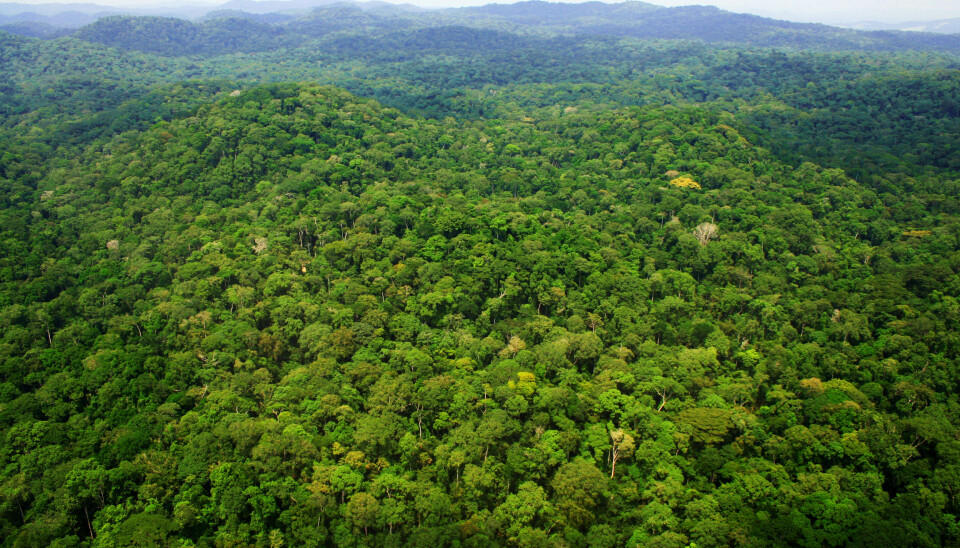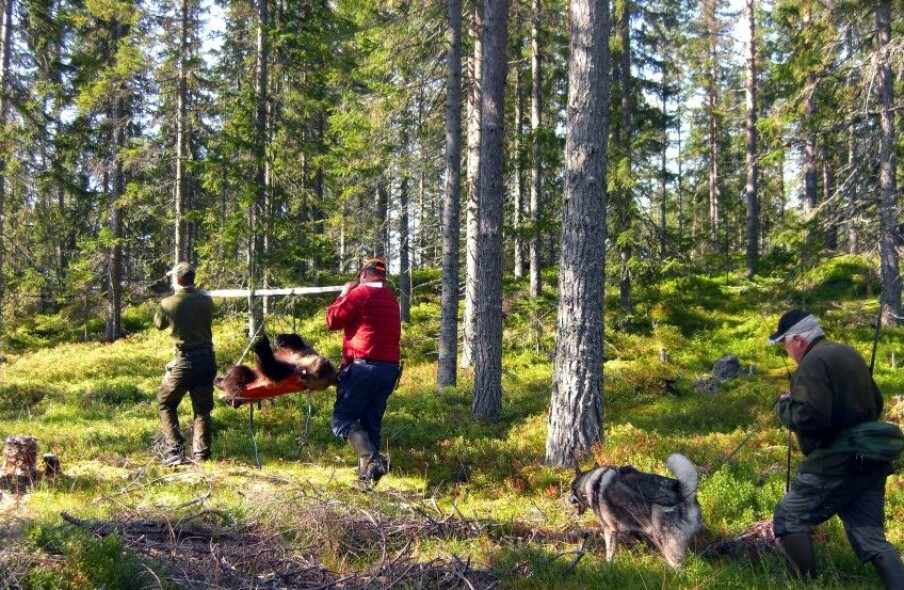This article is produced and financed by the Norwegian University of Life Sciences (NMBU) - read more

Followed 300 000 trees for 30 years:
Tropical forests will soon be emitting more carbon than they capture
"The word ‘alarming’ should not be used lightly, but in this case it fits”, says professor. The process can be reversed if we act quickly, he adds.
The forests of Africa and the Amazon are essential pieces in the global climate puzzle. So far, scientists have observed that these forests capture and store carbon, thus helping to lower the amount of CO2 in the atmosphere.
A new, extensive scientific study suggest this is changing.
Research shows that we are in the midst of a dramatic shift: the tropical forests' ability to bind carbon is not only reduced, but in sharp decline. If current trends continue, the forests of Africa and the Amazon will soon cease to be carbon sinks, and instead begin to release carbon into the atmosphere.
"Our results are alarming," says professor Douglas Sheil at NMBU - the Norwegian University of Life Sciences.
He is a contributing researcher to the study.
"The word ‘alarming’ should not be used lightly, but in this case it fits.”
Cataloguing 300,000 trees
Sheil is one of many contributors to a major research project that has followed 300,000 trees in tropical forests in Africa and the Amazon for over 30 years. This is the largest dataset ever used to calculate long-term trends in carbon dynamics in African forests.

“There is a vast amount of work behind this study,” he comments.
In total, more than a hundred scientists and their research teams have registered trees across Africa and the Amazon over the past decades.
By combining data from two large research networks with forest records in Africa (AfriTRON) and the Amazon (RAINFOR), researchers have found that the Amazon forests began to decline first, in the 1990s, whereas the African ones started declining 15 years later.
Study lead author Dr Wannes Hubau, a former post-doctoral researcher at the University of Leeds, UK, now based at the Royal Museum for Central Africa in Belgium, said:
“We show that peak carbon uptake into intact tropical forests occurred in the 1990s.”
“By combining data from Africa and the Amazon we began to understand why these forests are changing, with carbon dioxide levels, temperature, drought, and forest dynamics being key.”
“Extra carbon dioxide boosts tree growth, but every year this effect is being increasingly countered by the negative impacts of higher temperatures and droughts which slow growth and can kill trees.”
Billions of tons of carbon
Tropical forests have been an important buffer against anthropogenic climate change for decades by capturing and storing a significant portion of our carbon emissions. This important function is now on the verge of becoming reversed.
These forests contain significant amounts of carbon; the trees alone contain an estimated 250 billion tonnes. This corresponds to about 90 years of current global emissions of fossil fuels.
"Our results suggest that instead of continuing to absorb more and more carbon, the forests will eventually reach a point where they begin to release carbon and become a net source instead," Sheil says.
Though such disastrous changes had been anticipated in the long-term, the analyses indicate that this shift will take place within ten years.
This process is driven by drought and elevated temperatures. These changes stress the forests, causing trees to die and the vegetation to change in structure and composition.
When forests are depleted, many other critical processes, such as regional rainfall, are also affected, which can contribute to further loss.
“The speed and magnitude of the responses in these forests suggests that the consequences of climate and land-cover change in the tropics may be far more severe than previously thought,” Sheil comments.
“It is in our interest to prevent this from happening.”
He points out that we are not just facing an unparalleled environmental disaster, but a human one as well.
“This will affect millions of people and is likely to contribute to hunger, mass migrations and conflict.”
Time to act
The greatest threats are deforestation, degradation and fires. The researchers point out that these threats now require urgent action: intact forests must be protected, and degraded forests must be restored on a large scale. They also call for increased global community awareness regarding all the important forest services that we humans benefit from.
"I should emphasize that the world's forests are remarkably robust," says Sheil.
“If we act quickly and decisively, it is possible to reverse these processes. The most important thing is to not give up,” he concludes.
Reference:
Nature: ‘Asynchronous Carbon Sink Saturation in African and Amazonian Tropical Forests’ https://www.nature.com/articles/s41586-020-2035-0


































